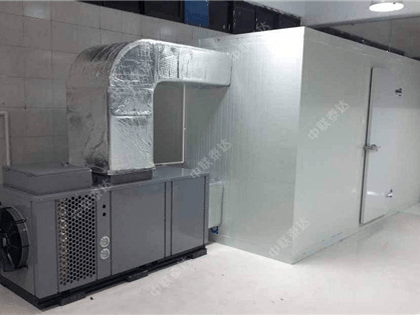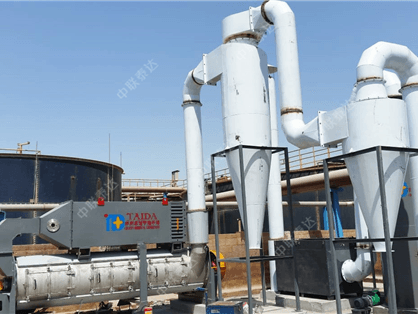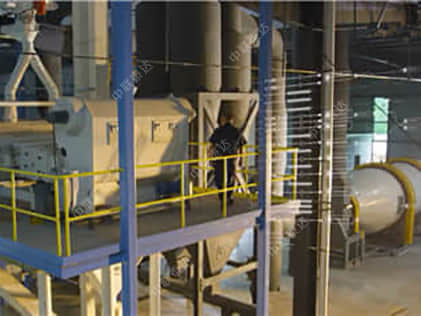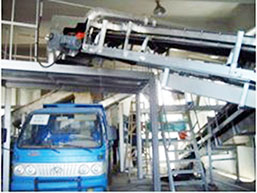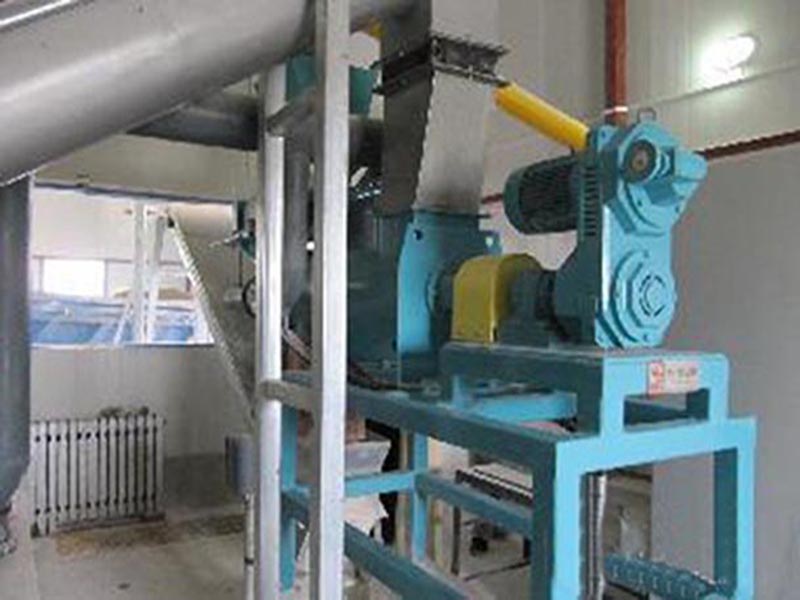Technical introduction
Generally speaking, in order to prevent secondary pollution, a sludge disposal process should be added after secondary treatment. The aim of sludge disposal: concentrate the impurities in water to solid state and separate them from fluid. This kind of concentrated matter is also called sludge which needs to be carefully disposed because of harmful matters. Sludge disposal equipment accounts for about 40% to 60% of capital investment of sewage treatment plants. Sludge disposal accounts for about 50% of total expense. Meanwhile, non-proportional economic cost becomes another disposal difficulty.
At first, raw sludge is sent to another pool from secondary sedimentation tank through sludge pump. Therefore, sludge will separate from supernate. Because the moisture content of the original sludge is usually reached 99.5%, the sludge to be concentrated, a variety of possible methods for reducing the volume of sludge. Methods such as vacuum filtration and centrifugation mechanical treatment is typically used prior to sludge disposal in semi-solid form. These methods are generally preparations sludge incineration. If you plan to use biological treatment, the majority of the settlement only by gravity or flotation methods concentrated. In both cases the corresponding sludge is still fluid state.
Advantages
1. Adopt closed cycle drying methods; save running cost; no exhaust air and exhaust heat discharged; no noise pollution; friendly to environment;
2. Adopt special patent technology; expand the application to drying field; can save about 30% energy; greatly save running cost;
3. Good quality of dried materials; good color; high class of products; no pollution; conform to the environmental and sanitary requests;
4. In the process of drying, materials will not deform and crack; thoroughly drying; less nutrients loss; can be stored for a long time; can protect original quality of materials;
5. adopt closed cycle drying method applies an inert dry environment (nitrogen, carbon dioxide, argon, helium), suitable for flammable and explosive material, harmful toxic materials, materials with a pungent odor, easy to oxide materials, to be recovered aroma and other volatile components materials;
6. Adopt micro computer to realize automatic control; stable performance and convenient operation; adopt programmable control mode; can set different drying curves in order to meet different drying modes of various materials;
7. In the late stage of drying, the dryer can be used with the cooperation with traditional steam, electric heating, infrared radiation and microwave drying, which can shorten drying period and save running cost.
8. Adopt international brand in order to guarantee good performance of the whole machine;
9. Set multilevel protection functions such as overload protection, high voltage protection and low-voltage protection;
10. Beautiful appearance and less area occupied;
Working principle
Sludge dryer is mainly composed of heat source, feeder, rotary drum, discharger, induced draft fan, dumper and electricity distribution cabinet. After the entrance of dehydrated sludge, sludge will spread evenly and get full contact with hot air with the stirring copy plates which spread evenly in rotary drum. Thus, the heat and mass transmission process will be speed up. In the drying process, under the function of copy plate and hot media with inclination, sludge will be sent to star type discharger at the other end of dryer as finished products. Process, technical parameters, structure selection and design are got from careful research. All the relevant parameters are proved by real sludge drying test. During design process, high moisture and stickiness are considered. Our company also adopts a series of special technologies and processes in order to guarantee good drying effect.
Technical parameters
|
Model |
Drum diameter (mm) |
Drum length (mm) |
Drum volume (m3) |
Rotary speed (r/min) |
Power(kW) |
Weight (t) |
|
HG0.6×6 |
600 |
6000 |
1.7 |
1-8 |
3 |
2.9 |
|
HG0.8×8 |
800 |
8000 |
4 |
1-8 |
4 |
3.5 |
|
HG1×10 |
1000 |
10000 |
7.9 |
1-8 |
5.5 |
6.4 |
|
HG1.2×6 |
1200 |
6000 |
6.8 |
1-6 |
5.5 |
6.7 |
|
HG1.2×8 |
1200 |
8000 |
9 |
1-6 |
5.5 |
8.5 |
|
HG1.2×10 |
1200 |
10000 |
11.3 |
1-6 |
7.5 |
10.7 |
|
HG1.2×12 |
1200 |
12000 |
13.6 |
1-6 |
7.5 |
12.5 |
|
HG1.5×8 |
1500 |
8000 |
14.1 |
1-5 |
11 |
14.8 |
|
HG1.5×10 |
1500 |
10000 |
17.7 |
1-5 |
11 |
16 |
|
HG1.5×12 |
1500 |
12000 |
21.2 |
1-5 |
15 |
17.8 |
|
HG1.5×15 |
1500 |
15000 |
26.5 |
1-5 |
15 |
19.2 |
|
HG1.8×10 |
1800 |
10000 |
25.5 |
1-5 |
15 |
18.1 |
|
HG1.8×12 |
1800 |
12000 |
30.6 |
1-5 |
18.5 |
21 |
|
HG1.8×15 |
1800 |
15000 |
38.2 |
1-5 |
18.5 |
26.3 |
|
HG1.8×18 |
1800 |
18000 |
45.8 |
1-5 |
22 |
31.2 |
|
HG2.2×12 |
2200 |
12000 |
45.6 |
1-4 |
22 |
31 |
|
HG2.2×15 |
2200 |
15000 |
53.2 |
1-4 |
30 |
36.2 |
|
HG2.2×18 |
2200 |
18000 |
68.4 |
1-4 |
30 |
43.3 |
|
HG2.2×20 |
2200 |
20000 |
76 |
1-4 |
30 |
48.8 |
|
HG2.4×15 |
2400 |
15000 |
67.9 |
1-4 |
30 |
43.7 |
|
HG2.4×18 |
2400 |
18000 |
81.4 |
1-4 |
37 |
53 |
|
HG2.4×20 |
2400 |
20000 |
90.5 |
1-4 |
37 |
60.5 |
|
HG2.4×24 |
2400 |
24000 |
108.6 |
1-4 |
45 |
69.8 |
|
HG2.8×18 |
2800 |
18000 |
110.8 |
1-4 |
45 |
71.6 |
|
HG2.8×20 |
2800 |
20000 |
123.2 |
1-3 |
55 |
76.8 |
|
HG2.8×24 |
2800 |
24000 |
147.8 |
1-3 |
55 |
85 |
|
HG2.8×28 |
2800 |
28000 |
172.4 |
1-3 |
75 |
95 |
|
HG3×20 |
3000 |
20000 |
141.4 |
1-3 |
55 |
87 |
|
HG3×24 |
3000 |
24000 |
169.7 |
1-3 |
75 |
105 |
|
HG3×28 |
3000 |
28000 |
198 |
1-3 |
90 |
123 |
|
HG3.2×24 |
3200 |
24000 |
193 |
1-3 |
90 |
120 |
|
HG3.2×28 |
3200 |
28000 |
225.2 |
1-3 |
90 |
140 |
Note: there is no prior notice for change of technical parameters;
 中文
中文 English
English Home
Home
